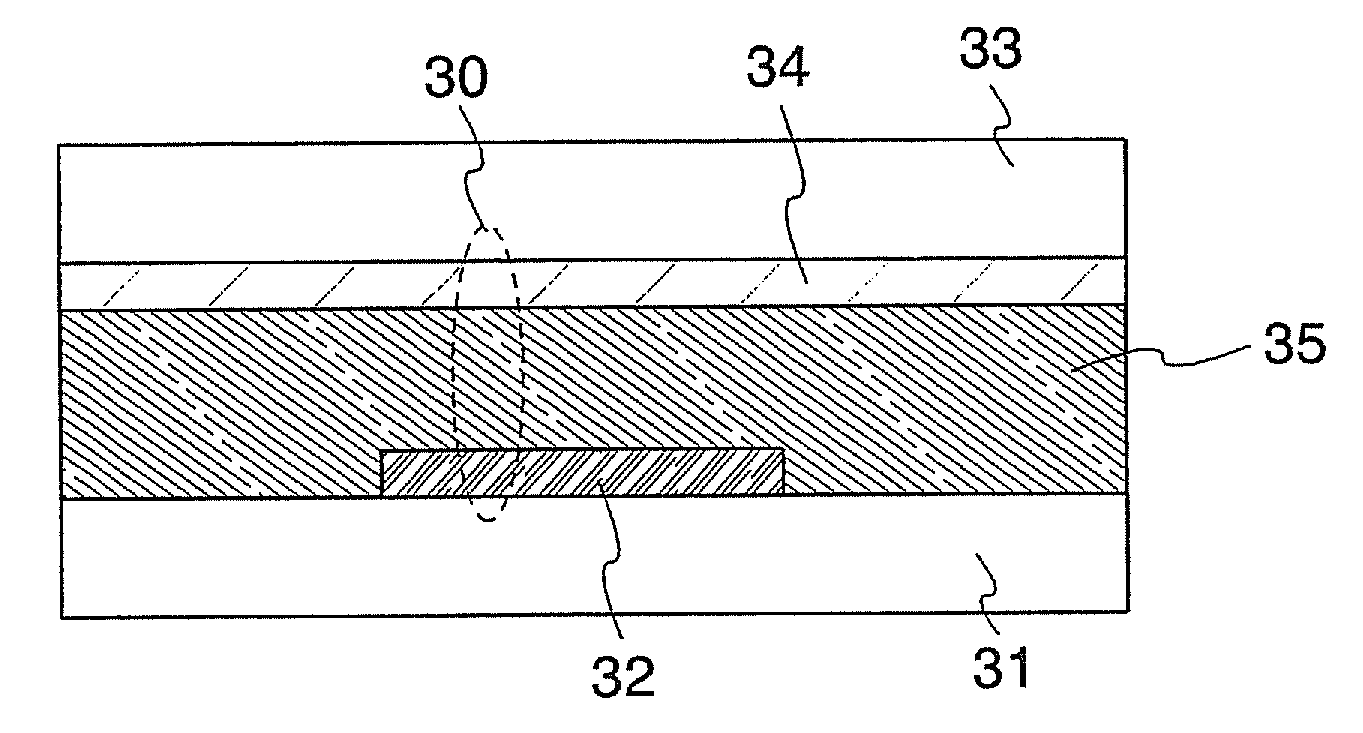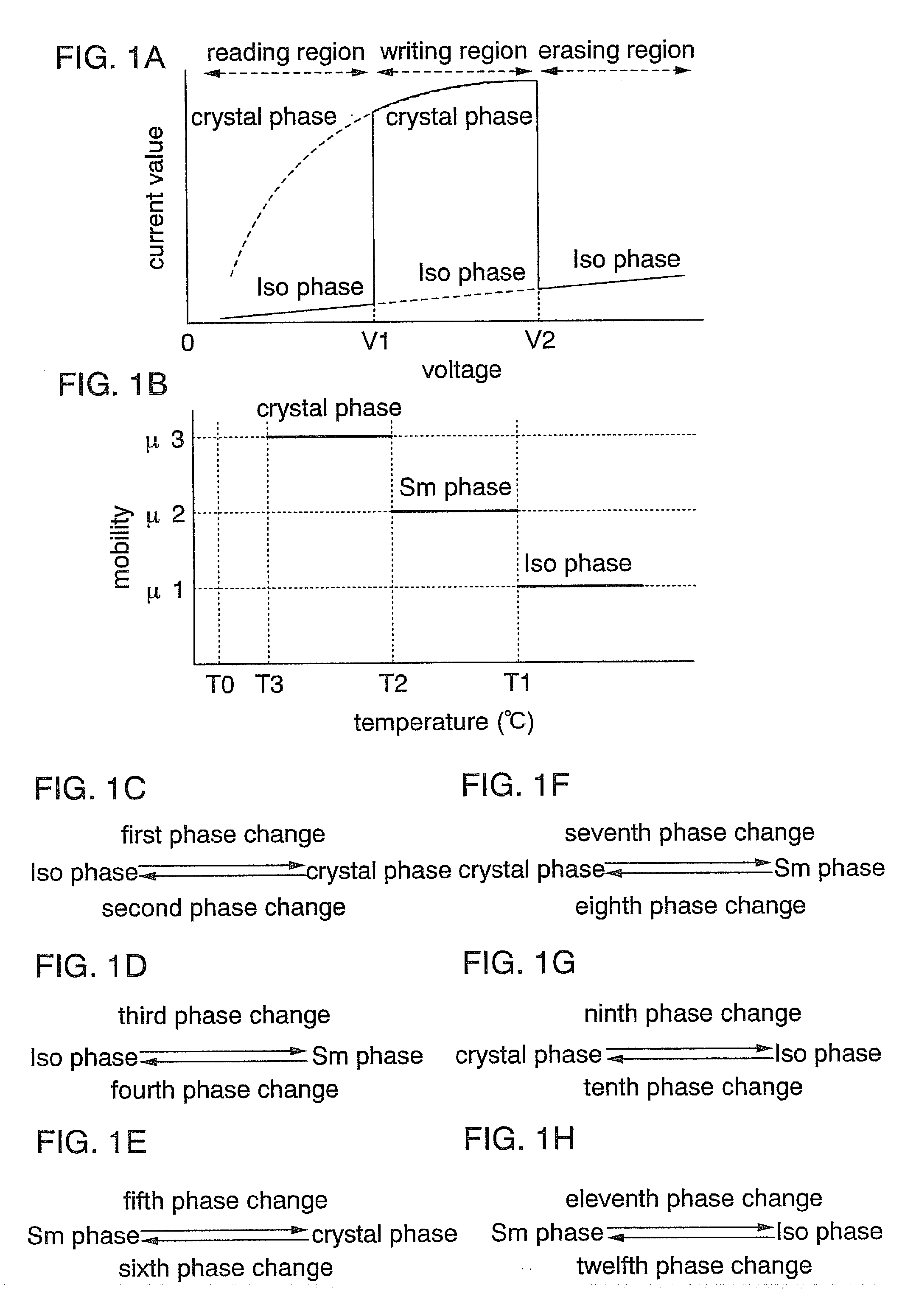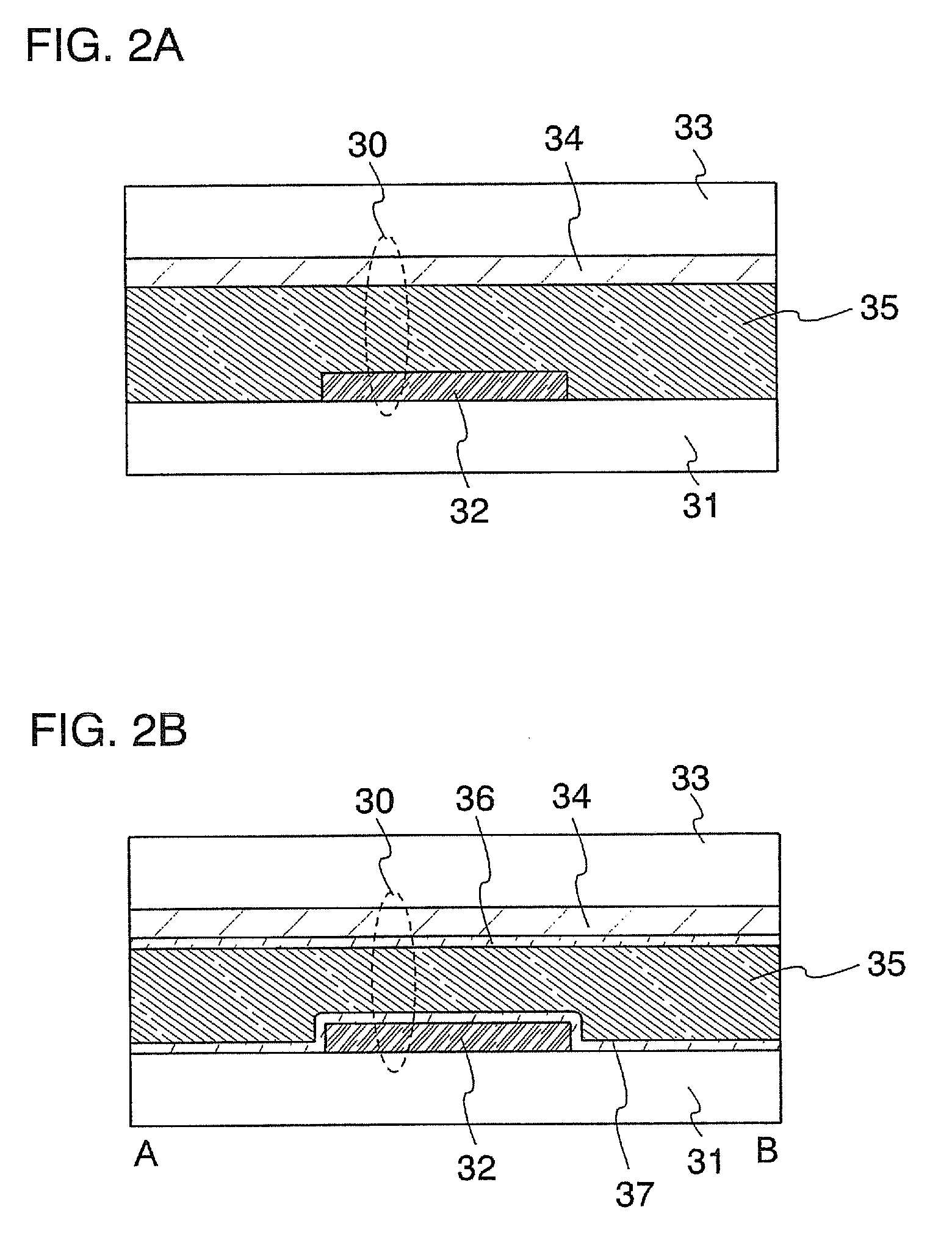Memory device and semiconductor device
a memory device and semiconductor technology, applied in thermoelectric devices, instruments, nanoinformatics, etc., can solve the problems of data being required to be written and additionally written, and achieve the effect of reducing the size of the memory device, simplifying the process, and reducing the cost of manufacturing
- Summary
- Abstract
- Description
- Claims
- Application Information
AI Technical Summary
Benefits of technology
Problems solved by technology
Method used
Image
Examples
embodiment mode 1
[0041]In this embodiment mode, one structural example of a memory element included in a memory device of the present invention is described with reference to drawings.
[0042]FIGS. 1A to 1H show operation methods of data reading, writing, and erasing of a memory element included in a memory device of the present invention. FIGS. 2A to 4D each show cross sectional structures of the memory elements included in the memory devices of the present invention.
[0043]As shown in FIG. 2A, a memory element 30 includes a first conductive layer 32 fanned over a first substrate 31, a second conductive layer 34 formed adjacently to a second substrate 33, and an organic compound layer 35 interposed between the first substrate 31 and the first conductive layer 32, and the second substrate 33 and the second conductive layer 34. Also, as shown in FIG. 2B, a surface of the first substrate 31 and the first conductive layer 32, and a surface of the second substrate 33 and the second conductive layer 34 may ...
embodiment mode 2
[0090]In this embodiment mode, a structural example of a memory element that is included in a memory device of the present invention is described with reference to drawings. Specifically, a case of a passive matrix type memory device is described.
[0091]FIG. 5A shows one structural example of a memory device 16 of this embodiment mode, which includes a memory cell array 22 in which memory cells 21 are provided in a matrix form; a bit line driving circuit 26 including a column decoder 26a, a reading circuit 26b, and a selector 26c; a word line driving circuit 24 including a row decoder 24a and a level shifter 24b; an interface 23 including a writing circuit 25, an erasing circuit 27, and the like which interacts with the exterior. The writing circuit 25 and the erasing circuit 27 are each formed by a boosting circuit, a control circuit and the like. Note that, the structure of the memory device 16 shown here is only one example. Other circuits such as a sense amplifier, an output circ...
embodiment mode 3
[0110]In this embodiment mode, a memory device having a different structure from that of the above Embodiment Mode 2 is described. Specifically, a case of an active matrix type memory device is described.
[0111]A structural example of the memory device that is described in this embodiment mode is shown in FIG. 7A, which includes a memory cell array 222 in which memory cells 221 are provided in a matrix form; a bit line driving circuit 226 including a column decoder 226a, a reading circuit 226b, and a selector 226c; a word line driving circuit 224 including a row decoder 224a and a level shifter 224b; and an interface 223 including a writing circuit 227, an erasing circuit 228, and the like which interacts with the exterior. The writing circuit 227 and the erasing circuit 228 are each formed by a boosting circuit, a control circuit and the like. Note that, the structure of a memory device 216 shown here is only one example. Other circuits such as a sense amplifier, an output circuit, ...
PUM
 Login to View More
Login to View More Abstract
Description
Claims
Application Information
 Login to View More
Login to View More - R&D
- Intellectual Property
- Life Sciences
- Materials
- Tech Scout
- Unparalleled Data Quality
- Higher Quality Content
- 60% Fewer Hallucinations
Browse by: Latest US Patents, China's latest patents, Technical Efficacy Thesaurus, Application Domain, Technology Topic, Popular Technical Reports.
© 2025 PatSnap. All rights reserved.Legal|Privacy policy|Modern Slavery Act Transparency Statement|Sitemap|About US| Contact US: help@patsnap.com



